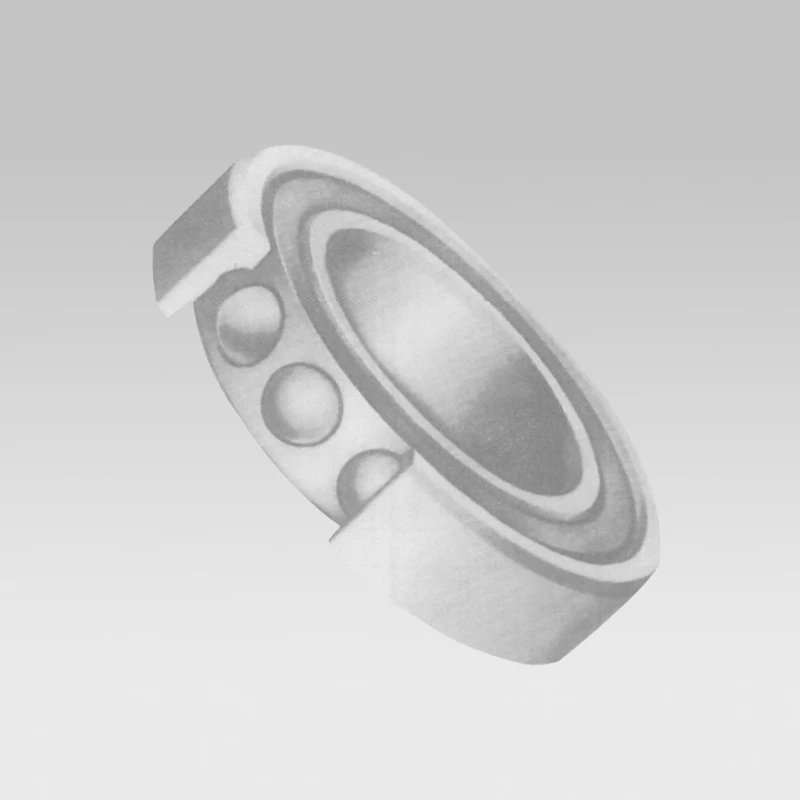
Nov . 27, 2024 00:33 Back to list
Angular contact ball bearing producers for precision machinery and equipment solutions
Understanding Angular Contact Ball Bearings A Key Component in Modern Machinery
Angular contact ball bearings are a crucial component in various mechanical systems, particularly in the realm of industrial machinery, automotive applications, and aerospace engineering. These specialized bearings are designed to handle both radial and axial loads, making them an ideal choice for applications that require precise rotational accuracy and high-speed performance. In this article, we will delve into the features, advantages, and applications of angular contact ball bearings, alongside the role of manufacturers in producing these vital components.
What Are Angular Contact Ball Bearings?
Angular contact ball bearings consist of inner and outer rings, balls, and a cage that holds the balls in place. Unlike traditional deep groove ball bearings, angular contact bearings are designed with an angle between the axis of the shaft and the line of action of the load. This unique design allows them to support combined loads; that is, they can accommodate both radial forces and thrust loads, depending on the angle of contact. The angle formed is critical, as it determines the bearing’s load-carrying capacity and operational efficiency.
Key Features and Benefits
One of the standout features of angular contact ball bearings is their ability to handle high-speed applications. The geometry of the bearing reduces friction between the balls and the raceways, leading to lower operating temperatures and improved performance. Additionally, these bearings are available in different contact angles (typically 15°, 25°, or 40°), allowing manufacturers to select the most suitable bearing based on the specific application requirements.
Another significant advantage is their ability to maintain high axial stiffness. This characteristic is particularly beneficial in applications where precision and stability are paramount, such as machine tools and robotic systems. Furthermore, angular contact ball bearings can be arranged in pairs or sets, either in a back-to-back or face-to-face configuration, to support even higher axial loads and enhance overall reliability.
Applications in Various Industries
Angular contact ball bearings are utilized across many industries due to their versatile performance. In the automotive sector, they are commonly found in wheel hubs, transmissions, and electric motors. The reliability and strength of these bearings contribute to the overall safety and efficiency of vehicles.
angular contact ball bearing manufacturer

In the aerospace industry, where precision and durability are non-negotiable, angular contact ball bearings play a critical role in the operation of engines and landing gear. Their ability to withstand extreme conditions, including high temperatures and shock loads, makes them an ideal choice for aircraft applications.
Additionally, in the machinery and equipment sector, these bearings are prevalent in CNC machines, conveyors, and pumps, ensuring smooth and accurate operation under demanding conditions. Their capability to handle combined loads allows for more compact designs and enhanced performance in complex machinery.
The Role of Manufacturers
The demand for high-quality angular contact ball bearings continues to grow, driven by advancements in technology and the need for reliability in mechanical systems. Manufacturers play a pivotal role in this landscape, focusing on innovation and precision engineering to produce bearings that meet stringent industry standards.
Leading manufacturers employ advanced manufacturing techniques, including computer numerical control (CNC) machining and sophisticated quality control processes, to ensure that each bearing meets specific tolerances and performance criteria. Material selection is also critical; high-grade steel or ceramic materials can significantly improve the bearing's performance, resistance to wear, and longevity.
Furthermore, an increasing number of manufacturers are investing in sustainable practices, such as reducing waste in production and using environmentally friendly materials. This commitment to sustainability not only meets regulatory demands but also appeals to environmentally conscious consumers and industries.
Conclusion
In summary, angular contact ball bearings are indispensable in today’s fast-paced industrial environment. Their unique design, which allows for the accommodation of both radial and axial loads, makes them suitable for a wide range of applications from automotive to aerospace. With the continued advancements in manufacturing techniques and materials, the future of angular contact ball bearings looks promising, offering enhanced performance and reliability to meet the growing demands of various industries. As technology evolves, so too will the innovations in bearing design and production, ensuring that these essential components remain at the forefront of engineering solutions.
Latest news
-
Durable Greenhouse Pillow Block Bearings for Reliable Ventilation
NewsAug.31,2025
-
Spherical Roller Bearings Applications: Heavy Duty, Self-Aligning
NewsAug.30,2025
-
Premium Deep Groove Ball Bearings | High Speed & Reliability
NewsAug.29,2025
-
Durable Scaffolding Clamps - Secure & Reliable Tube Connectors
NewsAug.28,2025
-
Common Failures in Thrust Ball Bearings and Solutions
NewsAug.22,2025
-
How Tapered Roller Bearings Can Take Shock Loads
NewsAug.22,2025
